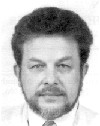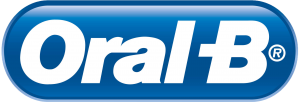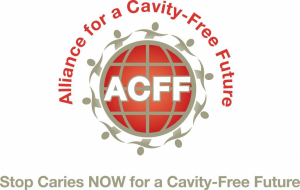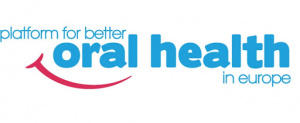
NEWSLETTER Number Three September 1995
Congress Registration Reciprocity - EAPD - AAPD
Editorial
Council Report
Letter to the Editor
Burges 1996 - Provisional Program
Second Milupa Symposium
Future Meetings
Report of the 15th Congress of the IAPD
Advertising
|
Message from the President. Let us have a vision of a strategy:
Goran Koch |
|
MAXINE POLLARD is taking over from Martin Curzon as Editor of the Newsletter. Dr Pollard is a lecturer in Paediatric Dentistry and has recently been appointed as director of the Postgraduate Programme at Leeds Dental Institute. She has worked in the Community Dental Service and general dental practice for eleven years before specialising in Paediatric Dentistty. Her Masters training was completed at Leeds as was her PhD. Her specialist areas include medically compromised children, fluoride and cariogenicity of foods. It is hoped to increase the volume of the Newsletter but to do this requires articles to be submitted from all over Europe. If anything of interest is happening in your Dental Institution/practice or in your country please write and let us know. Maxine Pollard |
|
New Councillors: Professor Ivo Furtado was approved as Councillor for Portugal and Professor Haim Sarnat was welcomed as the observer for Israel. Education Report The second edition of the guidelines for postgraduate training in Paediatric Dentistry were presented by Professor Luc Martens. Copies are now available from either Professor Martens or the Secretary. Newsletter: Issues continue to be sent to all members and two had been presented in 1995. Two further issues were planned. The appointment of a new Editor was discussed and it was agreed that Dr Maxine Pollard will take over with the issue of the September copy. Treasurer's Report: Dr Roberts sent a finance report which showed that the Academy's finances were in good order. The main account showed a balance of over 11,000 ECU. A sum of »4,000 had been lent to the Belgium group as start up costs for the Third EAPD Congress. The major expense during the year was now the Newsletter. For the future the Treasurer had arranged with our bankers that starting in January 1996 members could pay their annual subscriptions by credit card. Details of this would be published in a later edition of the Newsletter. No change in membership fee was recommended at this time. Credentials Committee: Applications for membership continued to come in at a steady rate and the approval time had been shortened. Council gave final ratification on 26 new members and there were a further eighteen applications in the process of assessment by the Credentials Committee. Total membership was 287. Councillors were reminded that applicants should complete the application forms fully and it should be signed by two Active members. Also applicants needed to send a curriculum vitae of no more than two pages. |
|
Future Congresses Levy on Congress Attenders Priorities for the EAPD Prize
|
|
I am a bit perturbed by the extremely Northern European view stated in the President's Address. As you know, and as he re-states, the Northern European Goveroments are regulating the removal of amalgams from dental practice for environmental reasons. It should not be expected to drive clinical practice in the rest of Europe. As it happens, I am no big fan of amalgam in the deciduous dentition and in fact I am surprised by the three starred exemptions enclosed in the blue box on page 1 of the Newsletter Number Two. I would have thought that all three of the exceptions pennitting the use of amalgam are in fact virtually contra-indications to its use for good sound clinical reasons. The answer to all three of these situations would seem to me to be the use of a pre-formed metal (stainless steel) crown. It may be of interest to EAPD members to know that we are currently undertaking an extensive investigation into the number of amalgam restorations placed in pregnant women over an 18 month period. It will be possible to correlate this detailed information with biological samples taken during their pregnancy. We shall of course report this in the professional journals in due course but, for now, you may be interested to see that some of the earliest information is the subject of a report at IADR. Peter J M Crawford * Correspondence regarding all matters of interest in |
|
PRE-CONGRESS COURSES
Trauma Update: This course will give an update on the latest research and techniques for the treatment of oro-facial trauma in children and young adults.
This course is designed to give training and instruction in sedation with particular reference to relative analgesia and intra-venous sedation.
This course will cover aspects of interceptive orthodontics including six year molar problems and premolar transplants. CONGRESS PROGRAMME
Oral and Poster sessions will be held on a11 of the above topics and any others based upon submitted abstracts.Deadline for abstracts will be l5th December 1995. Further details will be in the next issue of the Newsletter. The Congress Social Programme has been designed to allow everyone an experience of the Burgundian atmosphere of the ancient city of Bruges. The Congress centre is located in a recently renovated medieval hospital 'Oud St Jan'. All hotel accommodations are situated within walking distance. Further details may be obtained from the Congress Organiser-Secretary |
|
Nursing caries (nursing bottle caries) remains a significant problem throughout Europe. It affects approximately 5 to 10% of the infant population and does not seem to be declining. Despite many dental preventive programmes, such as water fluoridation, fluoride toothpaste and the many education initiatives, the condition persists. At the first Milupa Symposium the aetiology of the condition was discussed as well as the relationship of infant feeding in general and the use of sweeteners by babies and infants. Since that first symposium a number of research |
|
and public health initiatives have been started in various countries of Europe. This second symposium will bring together a number of speakers to provide an update on some of this research. Speakers will focus on the identification of at risk infants, current research strategies, dental public health programmes and also how to deal with the restoration of the affected dentition. The symposium has been generously sponsored by Milupa and will be open to all registrants at the main Congress. This will be of interest to all Paediatric Dentists. |
|
Europe
EAPD
1998 June (Date and Venue TBA) NORDIC PAEDODONTIC SOCIETY |
Overseas
IAPD AAPD A/NZAPD |
|
The 15th Congress of the International Association of Paediatric Dentistry was held in the beautiful City of Goteborg, Sweden on 8th to 11th June 1995. Goteborg sits on the south-west coast of Sweden and has strong maritime links. The Congress coincided with annual traditional celebrations to mark the graduation of students from high school, the streets being full of rejoicing teenagers, dressed in sailor uniforms, until the early hours. The Congress was centred in the Goteborg Concert Hall, the entrance to which is fronted by the impressive statue and fountain of Poseidon. The opening ceremony featured excellent choral entertainment provided by local school children and a parade of national flags from all countries participating in the Congress. Following welcoming addresses from Professor Goran Koch, the President of the Swedish Society of Paediatric Dentistry and Chairman of the local organising committee and Professor Sadahiro Yoshida, President of IAPD, a letter of welcome was read out from her Majesty Queen Silvia of Sweden, Patroness of the Congress. The following day the scientific programme began with an interesting symposium addressing Ethics in Paediatric Dentistry. The second symposium focussed on occlusal development and was regarding restorative materials for primary teeth. This session included excellent presentations by Dr F Frankenmolen from the Netherlands who spoke about experience with new compomer materials and Professor Murray from the UK. During the first day, oral presentations in the fields of behavioural sciences and cariology were held simultaneously to the main symposia. A typical 'tour de force' from Professor Jens Andreasen from Denmark opened the second day of the Scientific programme. He reviewed much of the |
|
latest long term follow-up data on dento-alveolar trauma from his group and other workers. The second symposium concentrated on the use of chlorhexidene varnish systems and was followed by a lively discussion about the relative merits of these products in preventive dentistry. Sugar substitutes provided the focus for the final session of the day. Oral presentations on the use of computers in dentistry, oral health of children world wide and dental materials continued throughout the day. The final day began with a session addressing the oral complications suffered by children with malignant disease. This was followed by a symposium on therapeutic dentifrices, which reviewed the existing evidence regarding the value of variousdentifrice components in preventive dentistry. The final main session of the congress examined the use of dental implants in children. Oral presentations covering the fields of traumatic dental injuries and dental care of the medically compromised child continued during the day. Alongside the symposia and oral presentations, poster presentations continued throughout. Over 170 oral or poster presentations were made at the congress, many of which were of a high standard. The conference was complimented by a varied social programme, which included a visit to the Goteborg Opera, a highly enjoyable banquet and various local tours. The congress was a great success, with around 800 delegates attending from all parts of the world. The IAPD now looks forward to its next international congress which will be held in Argentina in two years time. Stephen Fayle |
The Institute for Postgraduate Dental Education
Department of Paediatric Dentistry
Head: Professor Goran Koch
The Second International Postgraduate Summer Seminars on
ADVANCED PAEDIATRIC DENTISTRY
-
Strategies in caries prevention
-
Identification of high-risk patients
-
Treatment planning and restorative treatment procedures
-
Oral Pathology and surgery in children
-
Disturbances in tooth development and treatment
-
Pain control and sedation
-
Dental Care of handicapped and chronically sick children
-
Rational treatment of traumatic injuries to the teeth
-
Treatment solutions for dental and occlusal disturbances during development of the dentition
- guidelines for supervision of the dentition and tooth eruption
- best time for treatment
- the choice between different treatment solutions
The Institute for Postgraduate Dental Education, JÏŒnkÏŒping Sweden
Mon - Fri, 5th-9th August 1996 (30 hours) Fee US$1,200 Information: Preliminary application and more information about the course, travelling and lodging conditions, please contact Mrs Sylvia Johansson The Institute for Postgraduate Dental Education PO Box 1030, S-55111 Jonkoping Sweden. Fax +46 36 712235
Newsletter Editor:Dr Maxine PollardAsst. Editors:Dr Sue Hickson Dr Jack Toumba

 Among the most popular, but misused words in today's dentistry as in many other areas, are quality assurance. It is as important to define, measure and improve quality in paediatric dentistry as it is to reject vague information about quality levels without any strict evaluation. And now to the question of whether the Academy can or should influence quality assurance or improvements in European Children's Dentistry. Firstly we have to realise that the situation for Children's Dentistry shows large variations in Europe. In some countries there are well functioning, free of charge, government-funded systems and in others for a number of reasons such as economic or political, Chlldren's Dentlstry has a low or decreasing existance. Secondly we, as a group of specialists, are not fully reprisentative of chilciren's Dentistry in general. However we are a resource and by using the experiences and knowledge of the Academy and its members we can be a strong voice in the implementation of quality guidelines in Europe. In the meantime we can also brldge the gap between general Children's Dentlstry and specialist dental care. This will in turn benefit both the patients and the profession. All this is a demanding task but also a major role of our Academy.
Among the most popular, but misused words in today's dentistry as in many other areas, are quality assurance. It is as important to define, measure and improve quality in paediatric dentistry as it is to reject vague information about quality levels without any strict evaluation. And now to the question of whether the Academy can or should influence quality assurance or improvements in European Children's Dentistry. Firstly we have to realise that the situation for Children's Dentistry shows large variations in Europe. In some countries there are well functioning, free of charge, government-funded systems and in others for a number of reasons such as economic or political, Chlldren's Dentlstry has a low or decreasing existance. Secondly we, as a group of specialists, are not fully reprisentative of chilciren's Dentistry in general. However we are a resource and by using the experiences and knowledge of the Academy and its members we can be a strong voice in the implementation of quality guidelines in Europe. In the meantime we can also brldge the gap between general Children's Dentlstry and specialist dental care. This will in turn benefit both the patients and the profession. All this is a demanding task but also a major role of our Academy.

